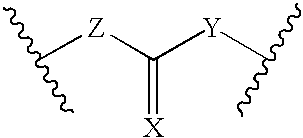Injectable sustained release delivery devices
a technology of drug delivery and injection, which is applied in the direction of osmotic delivery, microcapsules, coatings, etc., can solve the problems of affecting the efficacy of the device, increasing the difficulty of the manufacture of the device, and increasing the difficulty of the techniqu
- Summary
- Abstract
- Description
- Claims
- Application Information
AI Technical Summary
Problems solved by technology
Method used
Image
Examples
Embodiment Construction
[0097] A co-extrusion line consisting of two Randcastle microtruders, a concentric co-extrusion die, and a conveyer may be used to manufacture an injectable delivery device for FA. Micronized powder of FA may be granulated with the following matrix-forming material: PCL or poly(vinyl acetate) (PVAC) at a drug loading level of 40% or 60%. The resulting mixture may be co-extruded with or without PLGA or EVA as an outer layer coating to form a composite tube-shaped product. In-vitro release studies may be carried out using pH 7.4 phosphate buffer to evaluate the release characteristics of FA from different delivery devices.
[0098] FA granules used to form the drug core may be prepared by mixing 100 g of FA powder with 375 g and 167 g of 40% PCL solution to prepare 40% and 60% drug loading formulations, respectively. After oven-drying at 55.degree. C. for 2 hours, the granules may be ground to a size 20 mesh manually or using a cryogenic mill. The resulting drug / polymer mixture may be us...
PUM
| Property | Measurement | Unit |
|---|---|---|
| diameter | aaaaa | aaaaa |
| pH | aaaaa | aaaaa |
| outer diameter | aaaaa | aaaaa |
Abstract
Description
Claims
Application Information
 Login to View More
Login to View More - R&D
- Intellectual Property
- Life Sciences
- Materials
- Tech Scout
- Unparalleled Data Quality
- Higher Quality Content
- 60% Fewer Hallucinations
Browse by: Latest US Patents, China's latest patents, Technical Efficacy Thesaurus, Application Domain, Technology Topic, Popular Technical Reports.
© 2025 PatSnap. All rights reserved.Legal|Privacy policy|Modern Slavery Act Transparency Statement|Sitemap|About US| Contact US: help@patsnap.com



